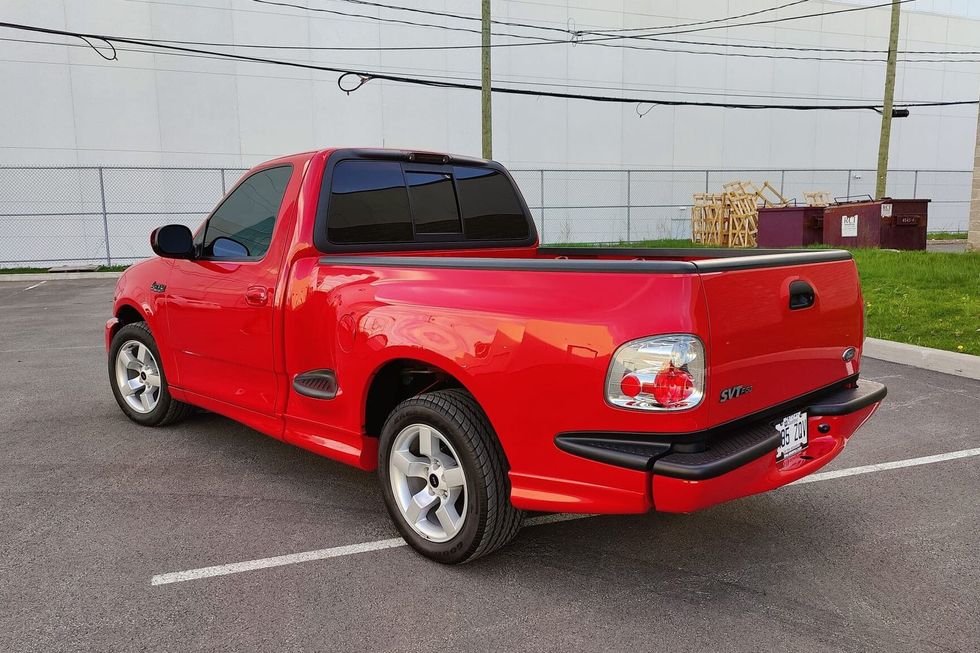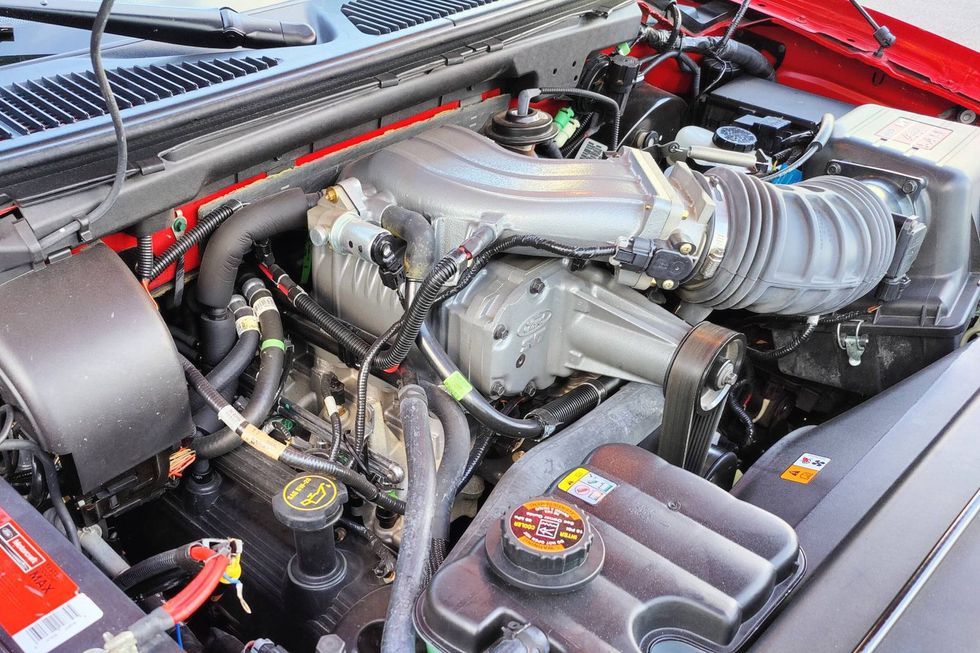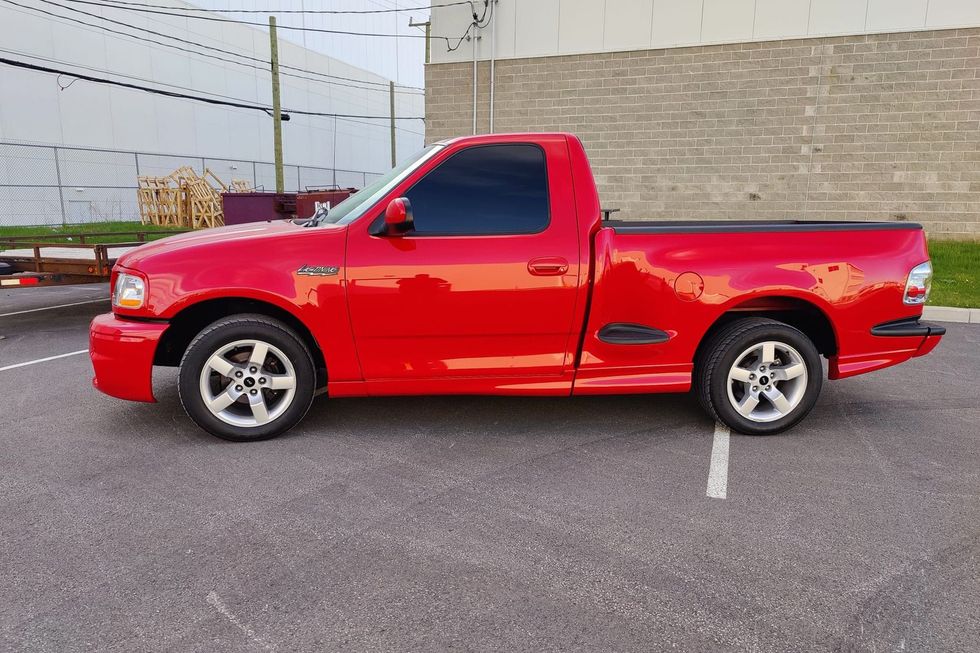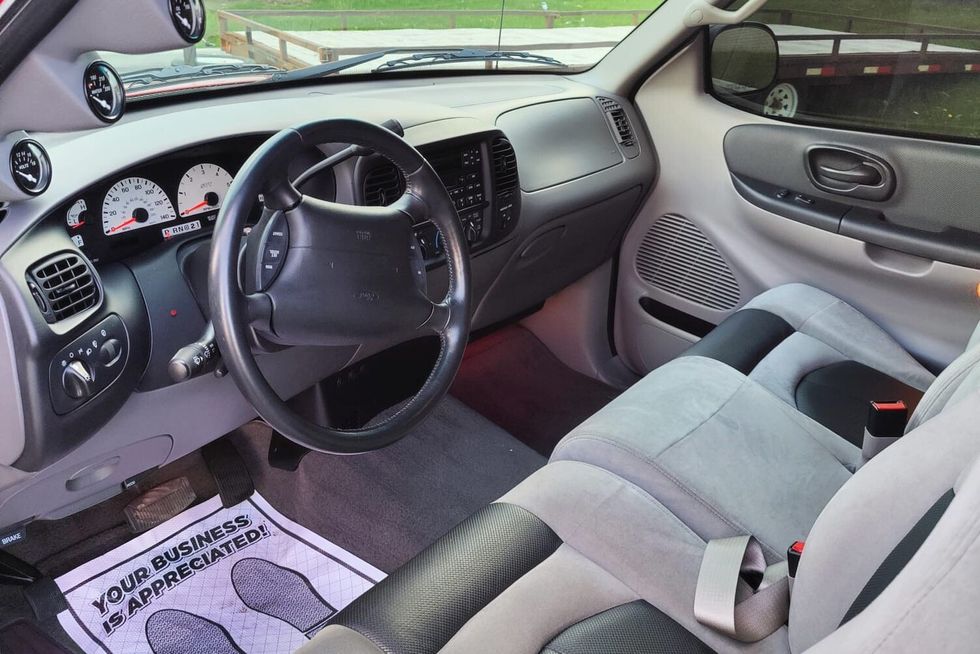Deco Diva - 1934 Hudson Convertible Coupe
How the painstaking restoration of an ultra-rare 1934 Hudson Convertible Coupe revived the design masterpiece
09/23/2018


The initial purchase price for a 1934 Hudson Convertible versus a similar vintage Ford or Chevrolet favors the Hudson; however, the lack of aftermarket parts today makes the Hudson a much more challenging car to restore. Luckily, the Hudson Club provides a valuable resource for the budding Hudson restorer: Fellow club members are generally reasonable to deal with if you discover that they have a part you desperately need. As long as you aren't buying it to speculate on a resale, and the Hudson club members know you genuinely need that exhaust manifold or distributor cap, it's like you're buying things at 1960 or 1970 prices.
Such is the case with this car's rear bumper, which was nearly impossible to find. Although a rear bumper may be simply a piece of chrome-plated metal, it may also be much more. A rear bumper can be a crowning achievement when it represents years of struggle, both in time and finances, to achieve the top level of factory correctness. This was the case for Pepperell, Massachusetts, resident Jim DiGiorgio and his exquisite 1934 Hudson Eight Special "LT" Convertible Coupe.
It is not known today how many LT series Convertible Coupes were in the total of 18,679 cars that Hudson built in 1934, and the Hudson Essex Terraplane Club's 1934 Registry lists just six. Despite most body parts being interchangeable between the steel-intensive Coupe and the Convertible Coupe body that was modified by the Briggs Body Company, unique components like the door windows and windshield pose a challenge; thankfully, the front and rear fenders, running boards, grille shell and hood are shared between both bodies. So Jim knew what he was in for when he purchased this Hudson from a fellow member of the HET Club in 1999.
Jim was already active in this club because he owned a 1931 Essex for 12 years prior to buying our feature car. "When I joined the Hudson Club in 1989, I saw a fellow member's 1935 Hudson Convertible and fell in love with the flowing lines of its fenders, the long hood and low profile of the windshield and top," Jim told us. "Combining its rarity and the touring driveability of the Hudson straight-eight engine versus the Essex straight-six gave it 'gotta have' appeal."
It was just a matter of time before Jim found this 1934 Convertible Coupe and made it his. Sporting lines that the automaker called "streamlined in wind-sculpted steel," this LT model was built with deluxe features like twin chromed taillamps, fender lamps and two horns; in its day, it competed with cars like the six-cylinder Studebaker Dictator Regal Roadster and Oldsmobile Eight convertible. During the restoration, Jim would fit desirable options like a second windshield wiper arm, a cowl ventilator screen and the factory six-tube radio.
Setting the 116-inch wheelbase Hudson apart from its Terraplane sibling was its L-head straight-eight engine, which for 1934 displaced 254 cubic inches via a 3 x 4.5-inch bore and stroke. With a 5.8:1 compression ratio and one-barrel Carter downdraft carburetor, it made 108hp at 3,800 RPM. Transferring this power was Hudson's three-speed Synchro-Shift gearbox with its unusual oil bath cork clutch.
So how exactly did Jim find this uncommon car? "I maintain the 1934 Registry for the HET Club, so I frequently get calls from club members searching for parts and technical advice. A gentleman in Lincoln, Nebraska, contacted me, claiming that he had a 1934 Terraplane eight-cylinder model. I tried to explain to him that they didn't make eight-cylinder Terraplanes in 1934, and he insisted that it was, and he was looking for parts for it. After seeing photos of it, and after a mating ritual of a couple of years, I convinced him to sell me the Hudson, knowing full well that I'd require a second car to complete the restoration.
"This car was originally from Fargo, North Dakota, and a few restoration attempts had been made on it through the years. In the 1960s, the car was worked on the way that you might 'restore' a 1985 Toyota Corolla now; there was a lot of brazing, a lot of panels that had been tacked over rust. Along the bottoms of the doors, they'd used a ball peen hammer to knock in the rusted panel before tack-brazing six inches across the bottom of the door and lead-filling it. Steel plates were tack-welded to the floor. The body wasn't properly cleaned, and they heavily sprayed on primer.
"The owner, three owners prior to me, had started to disassemble the car, but he had passed away. This resulted in many of the 1934 'convertible only' components, like the top latch hardware, being lost at chrome platers and other specialists. I had the car shipped in an enclosed trailer, and there were boxes of parts in the back. Fortunately, I located a very complete 1934 Hudson Coach donor car, which provided many of the common mechanical parts, and I learned how to fabricate parts, too.

"I knew going into it that I was going to do a complete restoration, and my intention was to restore the car as close as possible to the way it left the factory, while doing as much of the work myself as possible. A side benefit was the 'quality garage time' I got to spend with my son, Mike."
Jim knew that he had a major project on his hands when he began the restoration in 1996, but he didn't realize that the car wouldn't be finished until 2007; during that period, he'd spend years searching for things like the correct windshield wiper arms, the correct coil with its built-in ignition switch, the trim that goes around the inside of the windshield, the interior door top trim and the aforementioned rear bumper. He also had to make educated guesses on the appearance of the interior upholstery and panels. The choice to handle as much of the work himself was both a challenge and a blessing.
"To me, it was therapy. At the time I started, I was working for a high-tech company, and it was a really stressful job--I was traveling a lot, often dealing with Asia and Europe. To be able to go out in the garage and twist the wrenches on a Saturday afternoon or Sunday morning was so therapeutic because, at the end of my three or four hours out there, I could stand back and get that sense of accomplishment. It really helped me keep my sanity," Jim said.
"I had this philosophy when I started the project that I was going to do something each week, even if it was just researching or locating a part. So many of these projects that fall by the wayside happen when a person is excited and takes something apart, and they turn a car into enough components to fill a three-bay garage--and they never finish the project. I was determined to stay on this thing, and I had to do something every week. Even that took me 10 years! I did a lot of 'put it together, take it apart, put it together, take it apart.' " Jim and Mike worked together on various aspects of the project, from the degreasing and sandblasting projects to putting together the engine. The straight-eight engine received a .030 overbore, and as they reassembled it, the father and son discussed how to shim the rods, the difference between babbitt and insert bearings and other topics not commonly taught in auto shop classes today.
While Mike learned how to be fearless in tackling automotive projects, his father tapped into his resourcefulness. "I'd never made parts before, and I didn't know what was involved. My buddy let me take his 1935 convertible top latches off. I wrapped them tightly in plastic wrap and stuck them into a container filled with plaster. I removed them and filled the mold with PC-7, a two-part epoxy. I gave those to a guy who cast them in brass using the lost wax process. I filed, sanded, buffed and made the raw brass castings look good before having them plated.
"I also had to make the crank hole plate and cover, because NOS ones don't exist and I've never seen any intact. These were originally made out of pot metal, and because the radiator and harmonic pulley balancer sit so far back in this car due to the incline of the grille, the hand crank is about three feet long. If you jiggled the crank even an inch or two while hand-cranking the car, you'd crack the pot metal crank hole backing plate, which held the cover in place. Consequently, most crank hole covers were lost because the spring wouldn't hold it in the cracked backing plate. I had a friend who let me make a mold from his 1934 model cover, and I had it cast in brass."
Among the other fabrication skills Jim learned during the Hudson's restoration were how to create rubber convertible top seals, how to steam and bend ash and oak for the top bows and how to work with a shop to commission proper glass reproduction lenses for the rare and prized fender lamps. "I'm going to have 100 lenses molded, because in the Hudson club, if someone wants to make up a part, you'll take advantage of it. When I made the backing plate and crank hole cover, I made up a dozen raw brass sets, and I sold them in a matter of weeks; if I'd made 50, I could probably have sold them all."
A surprisingly positive ending followed the struggle to recreate the inner windshield trim piece, he explains. "This sheetmetal trim has a lot of complex bends and welds, and you can't use sedan or coupe trim--it's specific to the convertible, and was probably made up by Briggs. I ended up having the gentleman who did my paintwork fabricate one for me, going on photographs. His rate at that time was $65 per hour, and I think he spent 20 hours fabricating it. It looked okay, but I was never really happy with it; it was ripply and didn't fit right, which was an embarrassment to me.
"The Hudson Club National Meet is in a different location every year, and four years ago, it was held in Kearney, Nebraska. They always have a huge flea market, and I was walking around on the last day when I came upon a table--on it was the trim piece that goes around the windshield. Not just any trim piece, but the exact piece that came from my car, and I knew it because it was in the same putty-gray primer that the other parts of my car had come in. I told the seller the story, and he gave it to me for $100.
"What are the chances of, five or six years after you bought the car, going back to the state where it came from and finding a part that actually came off of your car? It had gone through several hands. Apparently, when the car changed hands two owners before me, they'd loaded it on a trailer and quickly high-tailed it out of town. They forgot a couple of parts, and this was one of them. Fortunately, nobody threw it out. I had it refinished and put it on, and the very expensive piece I had made is now hanging on my wall."
The only aspects of the car's restoration that Jim contracted out were the engine machine work, the chrome plating, refinishing of the body in Daphnis Green urethane enamel and the interior upholstery, which posed its own challenge. "There are virtually no factory pictures of the upholstery on these convertibles, only drawings in the dealer book--but there are photos of sedans and two-door Coaches. Every time I went to a show and saw a 1934 Hudson, I'd talk with the owner to find out why they did it the way they did. I put together a three-ring binder for the shop I had do the upholstery, and it marked out every little move, the spacing for the pleats in the seats, how to finish the top. My upholsterer was great to work with, and since we didn't have door panels as patterns, we looked at sedans and determined how we thought the convertible was done."
Yet while Jim was researching, working on the car himself or actively engaging the contracted shops handling other work, one piece eluded him. "When the Convertible Coupe was delivered to me, it was incorrectly equipped with 1934 Terraplane bumpers, which are an inch shorter in height than the Hudson versions. Hudson also used two different rear bumpers on their 1934 cars: a 'flat' one that hugged the body for cars with fender-mounted spare tires, and a 'bowed' one for the few Hudson coupes and convertibles equipped with a rear-mounted spare. While the 1935 bumper looks similar and will fit a 1934 car, side-by-side comparisons reveal the bumper and brackets are different.
"For the better part of 10 years, I searched flea markets, websites and even posted ads in various magazines seeking a correct rear bumper, but the leads I received were all dead ends. By early 2006, the car was 99 percent completed, save for that elusive bumper. A fellow Hudson Club member told me about a man in northern Vermont who had a 1932 Essex sedan with what might be 1934 Hudson bumpers, front and rear. I contacted this fellow and arranged to view his Essex, and sure enough, the 1934 bumper I needed was on his car."
The man required convincing that his car was indeed incorrect, which Jim was able to do by showing him original catalogs and factory photos of 1932 Essexes and 1934 Hudsons. He agreed to Jim's offer to trade his rear bumper for a nice correct one. "It was an expensive proposition--between plating costs for the 1932 and '34 bumpers and having a set of factory-appearing brackets made, I don't even want to think about how much I have into that back bumper," Jim said. "I was at the point where I was ready to show it, but I was going to have to strap a 2 x 4 to the back!"
And while Jim could probably now steam-bend a wooden facsimile, we agree with his assertion that factory correct is best.
Forget Ford’s groundbreaking electric truck for a moment to consider this 2001 Ford SVT F-150 Lightning now offered on Hemmings Auctions. Instead of the dual permanent-magnet motors found in the current electric Lightning, the 1999-2004 SVT Lightning featured a supercharged version of Ford’s 5.4-liter “modular” OHC V8. Rated at 380 horsepower in the 2001-’04 models, it was good enough to make a stock lightning a formidable opponent on the street as well as at the strip.
A follow-up to the original 1993-’95 F-150 Lightning, which was a high-performance version of a standard F-150, the second-generation SVT super truck presented as a more thoroughly developed model with a lot more exclusive components that further differentiated it from the rest of the F-Series lineup. Beyond the engine, the entire suspension and braking system, not to mention aerodynamic body add-ons, were part of the Lightning package from 1999 through 2004. Exclusive interior components were also part of the package.
At the heart of this SVT Lightning is its iron-block 5.4-liter SOHC, 16-valve V8 with a supercharger and an intercooler. The blower helped it deliver 380 horsepower and 450 lb-ft of torque in 2001, up some 20 horsepower and 10 lb-ft from the ’99 and 2000 models. The Eaton supercharged engine delivered peak boost of 8.0 psi and the engine featured an 8.4:1 static compression ratio, down from the standard 5.4 V8’s 9.0:1, which was rated at 260 horsepower and 350 lb-ft.
Power reached the rear 18-inch cast aluminum-alloy wheels via a four-speed automatic, an aluminum driveshaft and a beefy 9.75-inch, limited-slip rear axle with an acceleration-friendly 3.73:1 final-drive ratio, another upgrade for 2001. Car and Driver magazine reported a 0-60 mph time of 5.2 seconds and a quarter-mile in an E.T. of 13.8 seconds at 104 mph—impressive numbers for a 4,600-pound truck. Top speed was a drag-limited 142 mph.

Trucks generally require a suspension that can handle a full load in its bed while also providing competent driving while empty. But if you fancy one designed to a sports-car standard, then something has to give. In the case of the second-gen Lightning, Ford dropped its payload capacity to a mere 800 pounds. A standard 2001 F-150 Styleside carried a 3,180-pound payload rating, while an F-150 Flareside was rated at 2,005 pounds, some two-and-a-half times the Lightning, which featured the short-bed Flareside body. Towing capacity, likewise, was reduced from 8,800 pounds to 5,000 in the Lightning. But the Lightning’s strengths were never its payload or towing capacities, but it’s ability to perform like a sports car.
As a 21st century performance vehicle, however, the second-gen Lightning was also equipped to handle. A half-inch drop at the front was accompanied by SVT-specific coil springs and Bilstein shocks along with an exclusive 31-mm solid anti-roll bar. SVT’s influence continued at the rear with Lightning-specific five-leaf springs and a 23-mm solid anti-roll bar. The Bilstein setup at the rear included the right-rear shock staggered toward the front of the truck to reduce axle hop under heavy acceleration. The four-wheel antilock disc brakes were cribbed from the three-quarter-ton F-250, with 12.1-inch front rotors at the front and 13.1-inch discs at the rear.

As the years go on, fewer and fewer clean, unmolested low-mileage examples are out there, which is why this 2001 Ford SVT F150 Lightning now on Hemmings Auctions caught our attention. Showing just 5,525.5 miles on its odometer at the time of submission, it is said to be in “mint” condition and have an “immaculate” finish in the seller’s words. No modifications are noted to any part of the vehicle. The 18-inch factory alloys don’t appear to have any curb rash, though the Goodyear performance tires may be original. About the only deviations from stock are the tinted windows.
The latest electric-only F-150 Lightning is certainly a quick vehicle in its own right, but this 2001 edition from the engineers at SVT was built for excitement, not range. It was made with an old-school muscle-car vibe along with modern handling and braking. Which Lightning would you look good behind the wheel of?
Take a look at this second-gen Lightning on Hemmings Auctions before the bidding ends.

Spring is here. As the snow melts and the daffodils bloom, it’s time for many vintage cars to emerge from winter hibernation and get back on the road. Thinking of adding to the collection? We have 10 vehicles in spring-like shades of yellow – including cars and trucks, U.S. and European – to catch your eye.

















































